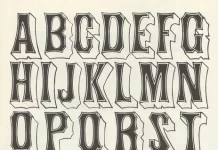Crest penetration testing (CPT) is a method of assessing the electromagnetic compatibility of products by simulating their susceptibility to interference from radio-frequency energy. It can be used to determine whether a product meets its specified performance with respect to the emission and immunity standards with which it needs to comply.
The method was intended as a means of measuring radio emission and immunity characteristics during actual use, thus overcoming some of the limitations of pre-production testing. CPT does not replace existing EMC tests but augments them by adding another dimension for assessing whole system performance. In many countries, including Singapore, the need for this type of test has been mandated in order that manufacturers might demonstrate compliance with pertinent regulations prior to marketing.
Practical Issues in Conducting Crest Penetration Testing
There are several factors to take into consideration when conducting crest penetration testing in Singapore, which will depend on the product itself or its intended use. For example, for a wireless unit, it might be necessary to take into account possible dynamic changes in the electromagnetic environment created by active devices such as lifts, cranes, and forklifts. Another factor is the safety of personnel involved in the testing. It would not be appropriate to subject staff to potentially hazardous conditions when undertaking pre-use tests. The concepts behind Crest Penetration Testing (CPT) can best be explained using an analogy involving sound waves. As illustrated in Figure 1, even if you stand behind a wall that holes in it, allowing sound energy through, you will still be able to hear a person shouting. However, if they shout louder, or if there is only a small hole through which the sound enters your ear, you may have difficulty making out what they are saying.

In a similar fashion, as radiofrequency energy passes from its source into an object such as a printed circuit board (PCB), it loses intensity, as illustrated in Figure 2 below. In this case, the radio frequency waves transmitted by an external source with equal alternate current (AC) amplitude and frequency pass through the PCB material and then enter a cavity or space where ducting occurs via apertures that penetrate the wall separating the two spaces. As our acoustical example above illustrates, when the radio frequency energy encounters an aperture, it can be attenuated or reflected to some extent.
The amount by which the radiofrequency energy penetrates through this path depends on factors such as, but not limited to, the size and shape of the aperture relative to the wavelength of RF radiation; any intervening material between source and receiver; and ambient conditions such as temperature flux variations. By measuring these values over time during CPT tests, Engineers will be able to determine whether it is likely that there will be interference between the product under test and other systems in use nearby.
How is crest penetration testing carried out?
The CPT tests are generally carried out using a remote, digitized field measurement system that can be used to drive an antenna located at the site. Using sophisticated signal processing, the digitized data collected from multiple antennas enable Engineers to determine how much RF energy passes through various paths on its way to/from the transmitter(s), which may include complex multi-path routes involving reflections off walls or metallic objects. This is then compared with emission measurements made during pre-production testing.










